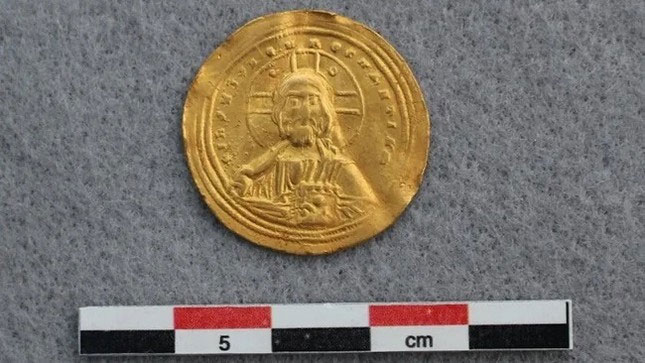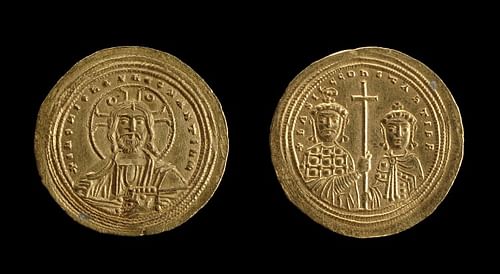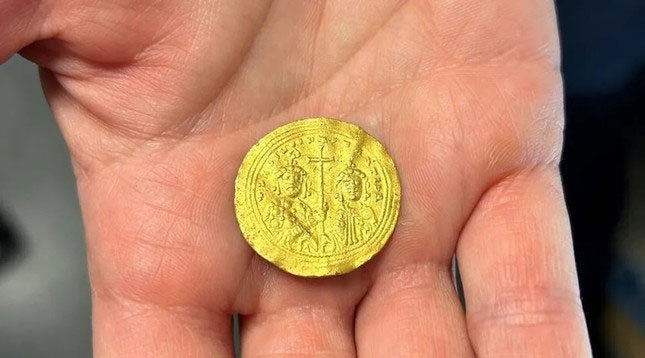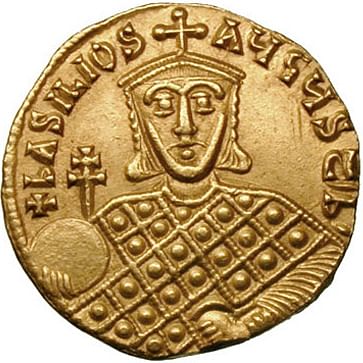A metal detector stumbled upon a rare gold coin while exploring the mountains of southern Norway .
 Jesus is depicted on one side of a gold coin. (Photo: Martine Kaspersen, Innlandet Fylkeskommune).
Jesus is depicted on one side of a gold coin. (Photo: Martine Kaspersen, Innlandet Fylkeskommune).
A metal detector discovered a 1,000-year-old gold coin depicting Jesus while exploring the mountains in Vestre Slidre, a municipality in southern Norway.
Known as a “histamenon nomisma”, this small coin was first introduced around 960 AD. It features Jesus holding a Bible on one side and images of Basil II and Constantine VII , two brothers who both ruled the Byzantine Empire, on the back.
The western half of the Roman Empire collapsed in 476, while the Byzantine Empire, or Eastern Roman Empire, continued to exist for another millennium.

Archaeologists believe that this coin was minted sometime between 977 and 1025, during the reigns of brothers Basil II and Constantine VII, based on three dotted lines surrounding the coin’s border, a characteristic design commonly used during that time period.
 The back of a gold coin has just been found.
The back of a gold coin has just been found.
This coin also has two inscriptions. The first inscription in Latin reads “Jesus, King of rulers” and the second in Greek reads “Basil and Constantine, emperors of the Romans.”
However, researchers do not know how the coin appeared on the mountainside. This coin, they speculate, may have belonged to Harald Hardrada , also known as Harald III , who ruled Norway from 1045 to 1066. Before becoming king, Harald III served as a protector of the Byzantine emperor . According to the Miami Herald, it was customary for the guards to “plunder the palace after the death of the emperor”.

It is possible that the coin was eventually used as a dowry for Harald III to marry the daughter of Prince Yaroslav (also known as Yaroslav the Wise) of Kyiv, in what is now Ukraine. This coin may also have been used as a form of trade.
Archaeologists plan to return to the mountain area in 2024 to conduct further excavations.





